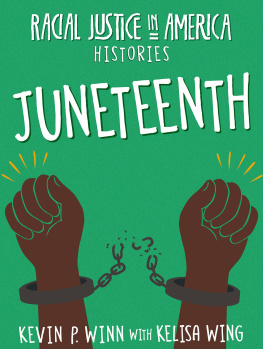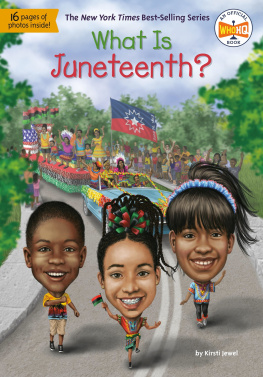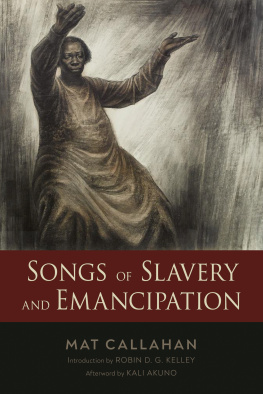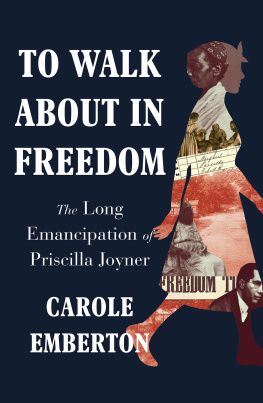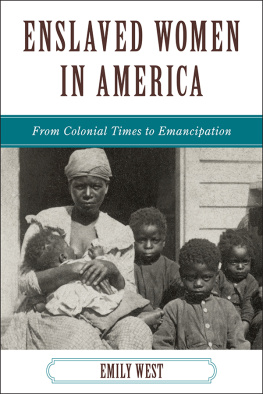Contents
Page List
Guide
Cover
Contents
The story of Juneteenth started hundreds of years before it was ever celebrated.
On July 4, 1776, Independence Day, America broke away from British rule, and was finally able to bask in the light of freedom...
But not everyone who lived there was that fortunate.
For what would span over 300 years, more than 400,000 African people were stolen from their homes and made to help build the country that became this free America. Though some tried to fight back, they and many of their descendants were enslaved, brutally forced to work for no pay, and denied their basic rights.
They could not eat what they wanted to eat.
They could not play when they wanted to play.
They could not live how they wanted to live.
And Independence Day did not free them. It would take eighty-nine more years until enslaved people, too, would be free.
Glimmers of freedom appeared state by state in the new, independent America.
Vermont was the first to free, or emancipate, its enslaved people in 1777. Slowly, other northern states did too.
Some people had long opposed slavery. Called abolitionists, they were especially active in the 1830s, fighting slaverys injustice with words and sometimes force.
What, to the American slave, is your Fourth of July? asked abolitionist Frederick Douglass on July 5, 1852. How can someone who is not free celebrate freedom?
But emancipation stopped cold at the southern states: they refused to free their enslaved people. Enslaved peoples work made lots of money for large southern farms, so in these states especially, freedom for all was bad for business.
Abolitionists worked hard to end slavery. But in some states, enslavers (those who held enslaved people) worked just as hard to keep it going.
Although Congressman Abraham Lincoln didnt always believe Black and white people deserved equal rights, he did believe the idea of slavery was wrong. When he was elected president in 1860, seven southern states did the unthinkable and broke away from the United States of America. They left the nation to form a new country called the Confederate States of America, sometimes called the Confederacy, where slavery would remain legal.
On April 12, 1861, the Civil War began, Southern states versus Northern states---Confederacy versus Union.
The North entered the war because they did not want the United States to break up into two countries. However, eventually the war became a battle to end slavery.
As the Civil War continued, President Lincoln took steps to end slavery. On January 1, 1863, he issued an order called the Emancipation Proclamation, declaring all enslaved persons in the now ten states of the Confederacy forever free. The Thirteenth Amendment to the constitution was passed two years later, after the Civil War ended, officially freeing all enslaved people in the United States.
Slavery had become illegal, but in Confederate Texas, enslavers kept that news a secret.
The big state of Texas was far from where most of the battles of the Civil War were being fought, so no Union soldiers were close enough to make sure the new laws were followed there. Texas farm owners had crops to harvest and sell. Without enslaved workers, who would pick them?
The Civil War had ended, but enslaved Texans were not told the truth. They continued working, because they didnt know they were actually free.
The Confederacy surrendered to the Union on April 9, 1865. But it wasnt until June 19 that Union General Gordon Granger arrived in Galveston, Texas. The war now over, he declared his General Order Number Three from a balcony:
The people of Texas are informed that, in accordance with a proclamation from the Executive of the United States, all slaves are free all slaves are free...
900 days after the Emancipation Proclamation,
89 years after Independence Day,
339 years after the first enslaved Africans came to the land that is now America,
... the secret was finally out: Freedom now belongs to enslaved people, too.
Newly freed Texans began to feel the long-delayed warmth of libertys glow. As the news spread, they prayed, ate, and sang in celebration, though some were still in shock. Others left right away to search for and reunite with long-lost family members from whom they had been separated by slavery.
June 19 became Jubilee Day---it was their independence day.
Starting in 1866, families and communities in Texas held the first yearly Jubilee Day celebrations. The next year, the Freedmens Bureau hosted the first Jubilee Day held in the state capital and taught formerly enslaved people about the privileges that freedom offered them.
Jubilee Day festivities grew as the newly emancipated used their new rights to earn money and purchase property. They bought land and built parks like Emancipation Park in Houston, their own spaces where they could freely gather in their best clothes to barbecue, sing, dance, pray, and play.
At many Jubilee Days, the Emancipation Proclamation was recited so that everyone could reflect on the words that had changed their lives forever.
Jubilee Day became Juneteenth, short for its date of June 19.
Not all Black people saw Juneteenth as a reason to hold big, joyous events. Some felt their pain from enslavement would never be understood by younger generations who hadnt lived through it, so they hosted their own separate gatherings. Others tried to ignore Juneteenth altogether. Slavery was a terrible memory, and they preferred not to talk about it.
And even though Black people were no longer enslaved, freedom wasnt the same for them as it was for other Americans. As the 1900s arrived, new laws spread throughout the South, limiting Black peoples rights and keeping Black and white people separate.
Called Jim Crow laws, these rules made it hard for many Black people to have access to opportunities like good jobs and education. Black people couldnt even enjoy parks where only whites were allowed, forcing many Juneteenth festivities to be held far outside of town.


